Today’s Russian MICE services market: the rise from exoticism to a full-fledged industry

Today, unlike in the 1990s, when it was largely seen in early post-Soviet Russia as exotic recreational activities and business offers targeting top foreign corporate executives in the country, the four letter MICE-services industry — the acronym for business meetings, incentives, conferences and exhibitions — has now become a self-sustaining full-fledged business unit in modern Russia like it is in other more developed foreign economies, going by the number of local and foreign companies offering these services and the growing number of MICE-related activities being organized in the country.
All the areas designated by these four letter acronym constitute what is generally termed ‘corporate or business tourism,’ meaning sending companies or government agencies’ employees on business trips, for example, to conferences, exhibitions, incentive programs or other corporate events. In other words, these employees, literally speaking, are forced to crisscross countries or the world at large for business purposes. This is what differentiates business tourism from so-called ‘private or mass tourism,’ where citizens usually go on entertainment and adventure trips so as to have rest from their official jobs.
Another point to note is that decisions relating to the sources and volumes of business travel expenditures are usually dictated by the importance of such trips to companies or organizations. This is why unlike ‘private tourists,’ decisions on business trips are, as a rule, usually taken not by ‘business tourists’ who are traveling around the world on behalf of their organizations, but their business owners, CEOs or heads of companies’ departments, etc. Another point worthy of note here is that while the meanings of letters — “M’, ‘C’ and ‘E’ — are clear, most laymen, however, have a problem with the real meaning ‘I’ denoting incentives in the industry’s ‘MICE’ acronym. As a form of clarification, incentive tourism, according to experts, is usually a special reward for outstanding companies or organizations’ employees for targets met or exceeded and/or for a job well done. This is why incentive tourism, unlike the other types of MICE tourism, is usually conducted purely for entertainment, rather than for professional or educational purposes.
Today, all these areas of corporate tourism, according to MICE experts, have firmly established themselves in modern business lexicon of the Russian economy. For instance, in September, one of such events, titled, The 7th International Meetings Industry and Business Travel Exhibition & Conference was held within the framework of the MIBEXPO Russia Business Tourism Exhibition at the Crocus Expo Center in Moscow. Notably, at a session, titled, ‘Business Tourism Industry-2020: A Look into the Future,’ leading Russian and foreign professionals in the industry ‘brainstormed’ over such issues as the analysis of congress and exhibition business, development of MICE tourism in Russian regions from scratch, the geographical projection of priority destinations for business events through to 2020, as well as effective methods and analysis of MICE services sales in conditions of rapidly growing market competition.
Besides, the official Russian Business Travel & MICE Award-2011 ceremony also took place during the MIBEXPO in September. The awards, honoring the best companies on the Russian MICE market and related industries, were given in 20 nominations to the best congress hotels, best congress centers, conference organizers and incentive programs in Russia and abroad, as well as the best business travel agencies, best airlines for business travelers, etc. Similarly, another major event in the industry, titled, “The Moscow International MICE Forum,” which was organized in March 2011 by aiGroup company, a top player on this market, set a new national record, hosting 76 Russian and foreign companies as participants, while the event itself was visited by 1,252 prospective customers from across the globe. More importantly, the organizers noted the presence of companies from Denmark, Finland, Norway and Sweden, which debuted in the forum this year.
 Turris Hotel Management Group CEO Svetlana Astafieva: “Today, we invite everyone, who plans to host different business events, to come and do so in our top quality hotel conference rooms with seating capacities varying from 10 to 250 people.”
Turris Hotel Management Group CEO Svetlana Astafieva: “Today, we invite everyone, who plans to host different business events, to come and do so in our top quality hotel conference rooms with seating capacities varying from 10 to 250 people.”
As noted by the forum participants, if in the past the event was attended by casual people, today, the situation is totally different as the bulk of visitors are professionals, who know exactly what they want and why they attend such events. In other words, MICE services and events in Russia, as highlighted by the forum, are no longer perceived as something exotic or seen as something associated mainly with corporate recreational activities somewhere abroad. “It is now seen as a vital platform for developing useful business contacts in and outside the country,” Kim Waddoup, the aiGroup president, said at the sidelines of the forum.
This view is shared by other MICE experts. Anastasia Moskvina, the event manager of the Moscow-based Boutique Hotel Golden Apple, has noted that MICE services and events are no longer seen as an exotic in Russia, as they have successfully and seamlessly blended into the nation’s modern business services environment. “It is gratifying to note how over the past few years a new business sector — the provision of MICE services — has successfully taken roots in Russia, which fully meets the needs of modern global business relations,” she added. “Of course, another name for this industry — provision of conference services — is more traditional for the Russian ears and fully adapted to the conditions on the local market.”
The Russian MICE market today: size and prevailing trends
The positive features noted at this year’s Moscow MICE Forum indicated that the Russian MICE industry is developing more and more with each passing year. This is also buttressed by the fact that an increasing number of tour operations and traveling management firms now have specialized MICE departments dedicated solely to catering for the needs of clients. This accelerated rate of development of the industry has been attributed to foreign companies operating in the country, from which big local companies gradually copied this tradition of organizing corporate events outside office premises. Gradually over the years the tradition was passed down to medium-sized and even small-scaled enterprises.
The growing popularity of outside-office business activities means additional business activities for MICE services providers — both serving internal and outward-bound clients that usually prefer to host their corporate activities in such destinations as Turkey, United Arab Emirates (UAE), European capitals and other tourist locations across the globe. All these tendencies underscore the maturity of the Russian MICE industry, where companies’ CEOs no longer view their participations in MICE activities as a waste of capital, but instead as strategic investments into corporate brands building, personnel development, social networking, etc.
Today, there are several travel management companies in Russia, helping to elevate the local industry to a level on par with those operating in more developed economies. These companies, unlike tour agencies that specialize in one line of services, can provide turn-key services, with offers ranging from standard routine travel packages to complex, combined, unique and completely exclusive services to clients capable of footing such bills. All these positive trends are reflected in the robust growth rate enjoyed annually by the industry in the pre-crisis era and the budding green shoots of business recovery from the global economic meltdown today.
These positive developments notwithstanding, experts contacted for this publication conceded that it is difficult to exactly pinpoint the overall size of this market, as it is closely interwoven and/or interrelated with several other industries that are far outside the standard MICE services, such as translation, entertainment, transportation, logistics, catering and other related services needed to ensure successful hosting of MICE events for their organizers, visitors and guests. Besides, data of MICE events released by organizers are often difficult to verify from other reliable sources, as there are no independent MICE audit firms in the country, and consequently, one simply has to accept such data on their face values.
 Andrei Mikhaylets, commercial director of Astrus Moscow City Hotel: “Our hotel has developed a unique business services package specifically for out-of-city clients on business trips, which, in addition to our traditional accommodation and breakfast services, also includes laundry and business center services, etc.”
Andrei Mikhaylets, commercial director of Astrus Moscow City Hotel: “Our hotel has developed a unique business services package specifically for out-of-city clients on business trips, which, in addition to our traditional accommodation and breakfast services, also includes laundry and business center services, etc.”
This, however, does not mean that there are absolutely no statistical financial guidelines on the market size, key players, growth rates and other fundamental metrics traditionally used by analysts to gauge industries and their performances in any given economy. “It is possible to indirectly gauge the size of this industry by analyzing the data on the sizes of the other sectors that are inter-related with it,” Andrei Mikhaylets, commercial director of Astrus Moscow City Hotel, added. (see this expert’s full comment in the Expert’s Corner rubric). Thus, according to the Russian Union of Exhibitions and Fairs, an association of leading exhibition centers and trade shows companies in Russia, other CIS and Baltic states. About 5,000 events are organized annually in the region, generating about $3bln-$5bln. Russia, thanks to its unquestionable hegemony of business and political affairs in the region, dating back to the Soviet times, accounts for the lion’s share of this volume, hosting between 1,500-2,000 high-profile local and international MICE events per annum, and generating revenues of about $1bln.
Thus, according to Step by Step, a Moscow-based market research agency, and other market exports’ reports, the Russian MICE market grew by an average of 20-25% per year in the pre-crisis era, peaking at the end of 2008 at the onset of the current global economic crisis at $500mln-$800mln, depending on the sources of statistics used. For obvious reasons, the growth rate fell drastically in 2009 and 2010 by as much as 30-50%, as the global economic crunch devastated national economies and businesses. Signs that the bad business era in this industry is fast receding into the past are evident in the robust growth in the industry in 2011, currently estimated at 20-30%. Probably, it is these positive trends that have enabled Step by Step to forecast a record turnover of between $950mln and $1.2bln in generated revenues by the end of 2012. By this time, the total volume of modern, international class MICE events hosting facilities in Russia is expected to reach 1.5mln sqm, a reality that will further accelerate the increase of MICE events in the country.
According to the Association of Business Tourism’s data and other market observers’ statistics, Moscow, the nation’s political and financial capital, naturally accounts for 50-60% of all the business conferences, tourism and other related events in the country, generating over $400mln in the process. For instance, Moscow alone boasts about 600 specialized MICE-services providing firms, while the nationwide total runs into several thousands. Besides, the number of annual high-profile MICE events — conferences, exhibitions, etc., averages between 800 and 1,000, generating between $600mln and $750mln, figures that experts say are fully on a par with global standards. The remaining part of the market activities, or about 40%, is held in the regions, with St. Petersburg, often called the ‘second capital and cultural center, leading the pack, with between 10-15% of the gross market share.
Experts, highlighting the dominance of Moscow in the national industry, have attributed its hegemony to the fact that it has everything — the professional manpower, technical base, the most highly developed and technologically advanced facilities and creditworthy clients, both individual and corporate, ready to pay above the national average rates for their MICE events — to guarantee success of any business activities in the city. “Moscow is, undoubtedly, the national market leader and trendsetter, as it boasts a huge variety of venues for hosting events of any kind, from high-level receptions to private parties, and for all categories and contingents of different guests and for different budgets,” Moskvina said. “In this regard, there is a belief that absolutely any customer can turn from a potential into an actual client at any moment.”
Moscow does not intend on its laurels, as the city government plans to double the number of MICE facilities in the city by 2014. According to the Moscow’s Mayor Office, there are currently about 215 hotels operating in the Russian capital, and this figure does not include hotels in shopping centers, sport, administrative complexes, and with plans to significantly boost this number over the next two years. “The city government plans to build 37 new hotels between now and 2012. Specifically, it will open 17 of them this year and 20 more in 2012,” Marat Khusnullin, Moscow’s deputy mayor in charge of urban policy issues, said.
All these are parts of the city’s measures to satisfy the expected boost in inflow of tourists and business travelers, which is expected to grow at exponential rates in the coming years, as the city gradually turns into an international financial center, and other urban development programs — expansion of the city and relocations of government buildings and bureaucrats to the outskirts, development of the Skolkovo innovational center, etc. “All these developments underscore the role of increasing business tourism in the capital. For instance, Moscow received over 4.2mln foreign tourists in 2010, 50% of whom were in the city for purely business purposes.”
One major positive trend on the market is its rapid expansion outward from its traditional citadel in Moscow and St. Petersburg, the nation’s two most developed cities, to other key Russian towns and regions, especially those serving as seats of regional and/or city governments. Therefore, it is no longer rare for key national or even international political and business conferences to be held outside traditional default venues in Moscow and St. Petersburg, with the likes of Kazan in Tatarstan, Yekaterinburg in the Sverdlovsk Region, Sochi, the 2014 Winter Olympic Games host in the Krasnodar region, Rostov-on-Don as well as Khabarovsk and Vladivostok in the Far East, coming to the forefront.
 Andrei Nemykin, the director of the MTUCI’s Congress Center: “We pay special attention to our employees. They are very friendly, so clients will never see sullen faces among our staff, as our top priority is to be good-natured and attentive to each client.”
Andrei Nemykin, the director of the MTUCI’s Congress Center: “We pay special attention to our employees. They are very friendly, so clients will never see sullen faces among our staff, as our top priority is to be good-natured and attentive to each client.”
Indeed, the increasing use of regional cities to host international events is evident in the Kremlin’s policy of hosting the biannual Russia-EU summits in different Russian regions. Similarly, the BRIC and Shanghai Organization for Cooperation conferences were held in Yekaterinburg in 2010, while about $6bln have been set aside for the development of the Russian Islands and Vladivostok to host the APEC Countries Leaders Summit in 2012. It goes, without saying, that hosting these events is a boon to the local MICE services providers that have got the lucrative state contracts to provide the necessary logistics, services and other resources needed to make these events resounding successes in these regions. It needs be noted here that Moscow- and St. Petersburg-based MICE services providers often argue that their regional colleagues lack the manpower, industrial expertise, professional and technical equipment and technological resources to successfully handle such events, but independent analysts see this as a pure deceptive marketing maneuver to deprive regional competitors of their due shares of government contracts.
Upswing in Russia’s MICE industry reflects positive global tendencies
The ongoing positive developments on the Russian market are a reflection of the robustly optimistic trends in the global industry, a reality buttressed by the huge success recorded at this year’s IMEX, the annual worldwide showcase for exhibition, incentive travel, meetings and events in Frankfurt, where turnout and overall volume of businesses conducted and contracts signed went up by 12%, compared with the previous year.
The Frankfurt’s IMEX, due to its global coverage, certainly, mirrored the international MICE trends across the world. Thus, according to post-show survey involving 1,000 business executives, the Frankfurt IMEX lent further credence to a continued upswing in overall global market activity and optimism, as clients confirmed business orders placement worth $508mln during the show, a rise of nearly 12.8% over the $450mln placed in 2010, while volume of more orders expected to be placed in the next nine months following the exhibition is currently valued at almost $2.2bln.
Other findings saw 97% of the respondents viewing IMEX either as ‘very or quite important’ for their business, with over 75% stating their reason for attending the event as ‘to keep abreast of the industry and discover what’s new’ in the industry, while about 68% used the event to seek new suppliers. In addition, almost 53% said they used the opportunity to meet their existing clients and 55% to network with visitors and industry colleagues from across the globe.
All these data correlated with similar data of the World Travel and Tourism Council (WTTC), which inspire more optimism in the industry. So, according to WTTC’s data for 2010, the volume of global business travel market totaled almost $820bln, a figure projected to increase by 2020 to almost $1.6bln, which means doubling of the market turnover or an annual segment growth rate of 4.3%. Similarly, WTTC estimated the size of the global private travel market by year's end at $3.1trln, while long-term forecasts see this amount rising by 2020 to $5.8trln, or an annual growth rate of 4.1%. Of particular interest is the fact that WTTC experts also see the future of the Russian MICE-market in similarly positive colors. Thus, according to WTTC, the volume of Russia’s business travel market in 2010 totaled $6.5bln, while long-term projections envision a robust increase of this figure to $18.4bln by 2020, meaning an average annual growth rate of 6%. Similarly, the WTTC has estimated the size of Russia’s private travel market segment at $50.5bln, while the forecasts for 2020 envisage an increase of this figure to $122.8bln, or an annual increase of 4.3%.
However, despite the recent robust development on the Russian market, it still remains a stark outsider in the global gathering of top national markets, led by the United States, Great Britain, Canada, EU states and Japan. The second tier group is led by emerging top Asian countries, followed by Middle East, Latin and African states. For instance, according to Step by Step, the annual size of the British MICE market alone according to Step by Step, currently hovers around $10bln, a figure that is light years away from Russia’s market current size of $500mln-$800mln and the nearly $1bln expected to be generated by 2012, where the continental MICE market is valued at upward of $25bln.
Commenting on ‘the tender age’ of the Russian market vis-a-vis other more developed markets, Alexander Melnik, the Yahonty Nature Resort Hotel sales and marketing director, noted that the history of Russia’s contemporary MICE industry, in the traditional international usage of the term, could be traced to just 15 years ago, when the first professional MICE services and facilities providers started functioning as a separate business unit. “If to briefly and objectively assess the current state of affairs on the Russian market, I can say that we are still in the deep infancy stage of development, like a baby trying to learn how to walk, compared with the other more developed national markets.” (see this expert’s full comment in the Expert’s Corner rubric).
 Gulnara Masharipova, sales manager of Yahonty Nature Resort Hotel: “I will reiterate here that it is only our hotel in the Moscow Region that has all the necessary facilities to host a group of over 1,000 people and provide them with all top quality halls for meetings, 50 negotiation rooms, etc.”
Gulnara Masharipova, sales manager of Yahonty Nature Resort Hotel: “I will reiterate here that it is only our hotel in the Moscow Region that has all the necessary facilities to host a group of over 1,000 people and provide them with all top quality halls for meetings, 50 negotiation rooms, etc.”
This probably explains the fact that industry’s activities are not proportionally spread out across the four components of the market, as indicated in the MICE acronym. Thus, according to exports’ reports, the industry is hugely lopsided in favor of individual business trips and meetings, which account for almost 70% of the market, while the other MICE activities — incentives, conferences and exhibitions — jointly account for just 30% of the industry’s activities. The latter statistics, broken down, translates into congresses and conferences (16%), exhibitions (11%) and incentive tourism (about 2%). This delineation of the MICE market, with the lion’s share belonging to meetings, according to Step by Step, is not likely to change in the near future.
Russian MICE industry’s key players and experts
For obvious reasons, the key players in this industry are companies offering services depicted in the MICE acronym. It is, therefore, understandable that hotels, business centers, conference halls and out-city business amenities are the pacesetting and growth driving forces in the industry. Specifically, this places the hospitality industry in the epicenter of the market, as MICE events organizers and business representatives need places for accommodations, meetings, conferences and seminars and finally for feeding and recreational activities.
Therefore, these services mean additional revenues to hotels that have the equipment and other needed facilities — conference halls, negotiation rooms, in-house restaurants, technical gadgets such as telephony, Internet, WiFi and others, as well as recreational amenities — to offer companies and individuals in need of such services. Thus, commenting on the current trends in the industry, Svetlana Morozova, the banquet halls and conference services sales director at Lotte Hotel Moscow, attributed the increasingly center role of hospitality facilities to globalization of businesses. “The recent market changes linked to globalization of companies’ operations and more intensive development of trade and business relations, compared with the crisis period, have turned hotels into main suppliers of conference and related services,” she added. “As a consequence, there is a clearly positive trend in demand for hotel services, as companies now fully understand the need and usefulness of hosting conferences, conducting presentations and announcements of new products in well-equipped modern hotel facilities in order to attract new partners and investors.”
Apart from hotels, other key players, and hence main beneficiaries of the growing positive trends on the market, are the providers of spaces for conferences, exhibitions and other related corporate activities, whose marketing departments also ‘went an extra mile’ during the financial crunch to adopt anti-crisis business strategies to keep and/or attract new customers, and hence remain afloat, while companies that failed to do so were swept off the market in the financial tsunamis. On the other hand, both potential and traditional users of MICE services have also undergone ‘metamorphosis,’ as financially solvent clients, realizing their new privileged positions in the crisis and post-crisis eras, have become more difficult to satisfy as they have become more demanding, selective, sophisticated, and above all, more economical as the tough economic conditions have made everyone more prudent in spending.
Confirming these trends, Andrei Nemykin, the director of Congress Center facilities at the Moscow Technical University of Communications and Informatics (MTUCI), noted that the crisis has taught both individual and corporate clients to economize on their budgets for conferences and other related business events. “Of course, during and after the economic crisis, companies became more economical in their MICE expenditures. Before the crisis, the demand for MICE events was so great that we decided to build a congress center, but during the crisis, we experienced a serious decline in the demand for these services.” (see this expert’s full comment in the Expert’s Corner rubric).
MICE industry versus global crises and natural cataclysms
Whenever negative phenomena or natural disasters occur, the first line of businesses to suffer are MICE services companies such as tour operators, airlines, hotels, congress centers or those indirectly affiliated with the sector. It was, therefore, not surprising that the MICE industry recorded its lowest revenue at the peak of the current crisis in 2009, when most national economies were on the brinks of imminent bankruptcies, and corporations, in their attempts to remain afloat in a fiscally trying business environment, significantly reduced their budgets for business trips, conferences and seminars, etc.
“Signs that the bad business era in this industry is fast receding into the past are evident in the robust growth in the industry in 2011, currently estimated at 20-30%.”
This is why experts often refer to the MICE industry as a reliable barometer for measuring the soundness or poor state of national and global economies, as it objectively reflects all the trends — both positive and negative — in a particular country or across the globe. This is because the MICE industry, by nature, is highly sensitive to all types of crises, natural disasters, political instability, such as those going on in the Middle East, and economic meltdowns, such as the ongoing global financial crisis. It is equally sensitive to natural disasters. For instance, the Iceland’s devastating Eyjafjallajokull volcanic eruptions in 2010 disrupted airline traveling and other forms of businesses, the earthquakes and tsunamis that happened in Japan in March, later damaged the country’s reactors at the Fukushima Daiichi nuclear station with demoralizing ecological contaminations, at the end of summer, multiple tornadoes briefly made the United States out of bounds to traveling and businesses.
Indeed, the current global economic crisis became a watershed for the MICE industry, just like other industries, as the negative fallouts from the drastic global financial meltdown introduced sanity into an economic system that had totally spun out of control. Specifically, the MICE industry in general, and the hospitality and tourism segments in particular, responding to the hard economic times, became more flexible and customers oriented, with airlines and hotels offering ‘more lenient terms and clients-friendly conditions’ for booking and/or canceling previously booked accommodations or flights at the peak of the crisis. Thus, Igor Nesterenkov, the CEO of Maxima Hotels Chain, commenting on the impacts of crisis on the industry, noted that the negative impacts of the global financial crunch on the development of the MICE industry. “With the significant decline in business activities and drastic reduction companies’ annual budgets for travel and training, it was natural that a complementary decline occurs in demand for conference facilities and services,” he added. “Customers have become more careful in using their available funds. Consequently, the eventual winners in such market conditions are companies that are able to offer maximum MICE services and activities for clients at adequate rates.”
Voicing a similar view, Lotte Hotel Moscow’s Morozova noted that in the crisis period, hotels’ revenues generated from MICE services fell by almost half, and that sales only started to return to normalcy in late 2010, when sales started rising till they reach their current level of 30-40% compared to pre-crisis levels. “This notwithstanding, hotels in the prevailing market environment have deemed it very vital to continue using all the possible ways optimizing revenues. The main task of optimization is to create a balanced conference product meeting the best price-quality ratio, get maximum revenue while stimulating customers to comeback again and again to hotels.”
The contrary is also true, when things are good, the MICE industry is also the first market to reflect such budding positive changes and/or indicate a general outlook of better times ahead. This is readily visible in the increasing number of air flights, local and international conferences, exhibitions, uptake in hotel bookings and accommodations and other corporate events as business executives, trade representatives, HR specialists and exhibitors are returning to normal business life in post-crisis eras, crisscrossing the globe in searches for new business contacts, new sales outlets for goods and services as well as talents or to gather at high-profile business conferences to brainstorm on key national, regional, continental and global issues and challenges beginning for urgent solutions. Commenting on these trends, MTUCI’s Congress Center’s Nemykin noted that the situation is changing for the better as the Russian conference services market is currently experiencing a rebirth. “Most companies have in general exited the crisis and returned to their pre-crisis levels of business activities. This is seen, at least, by the increasing occupancy in our Congress Center.”
In solidarity with other industry players, Gulnara Masharipova, the commercial director at the Yahonty Nature Resort Hotel in the Moscow Region, also conceded that the ways of doing business in the industry were altered by the crisis, and that positive trends only started in 2010. “During the crisis, most Moscow-based companies basically refused to conduct multi-day events outside the capital, preferring instead to renting conference facilities in city’s hotels, where even five-star hotels were busy dumping prices — offering rooms for as low as $100-$120, with conference halls as a free bonus — in order to attract the few solvent clients by all means possible,” she noted. “Things have only started getting better in the industry after the rugged crisis-ridden years of 2008-09, as the financial crunch has taught everyone to be more prudent with their finances. “This has led to significant changes in the structures of companies’ budgets for MICE activities, as the costs of banquets and entertainment programs are now drastically reduced or even excluded in favor of programs aimed at improving companies’ work effectiveness. To meet these new expectations, hotels and other MICE services providers must offer a range of services meeting certain quality level.” (see this expert’s full comment in the Expert’s Corner rubric).
Another observation made by experts from the traditional roller-coaster relations between MICE industry and the increasing incidences of crises and catastrophes hitting national and global economies is that modern MICE industry, unlike in the past, is gradually developing a strong immunity to increasing force majeure situations that used to cripple the market in the past, a fact evident from the resounding successes of the Moscow MICE and Frankfurt IMEX shows. The success of these events, judging by the feedback from the participants and post-forum surveys, means that even the turbulent socio-political events in the Middle East, the natural disaster that engulfed Japan and other locations across the globe, and the negative apprehensions created by these negative phenomena did not harm these international gatherings of MICE specialists, as more people attended these forums this year than in the previous years, the organizers said. This new phenomenon is partly explained by aiGroup president, who has always believed that crises and various upheavals are catalysts for faster development of the MICE industry. “This is because crises make business executives think faster and in order to surmount difficulties in crisis periods one is forced to search for new lines of activities and establish new contacts.”
Key problems and difficulties on the Russian market
Despite the robustly positive trends, experts and market leaders say a lot of negative issues still abound in the Russian industry that are hindering both business expansion, and consequently, profits generation. One of these is the acute shortage of international quality MICE facilities both nationwide and in major cities, including such hegemonic leaders as Moscow and St. Petersburg. Indeed, if the level of MICE developments in Russia’s ‘two capitals’ is much far below global standards, one then can only image the poor states of affairs in other less fortunate Russian cities and regions, experts said. “Until recently, there were practically no Russian hotels capable of professionally hosting a MICE event for 500-600 participants. Such large orders were frequent, consequently, majority of companies, unable to find the required facilities at home, had to go to Turkey, Egypt, UAE, etc., to host their events,” Yahonty’s Melnik recalled. “The situation only started changing recently.”
“Apart from hotels, other key players, and hence main beneficiaries of the growing positive trends on the market, are the providers of spaces for conferences, exhibitions and other related corporate activities.”
Bert Fol, the general manager of the Marriott Moscow Royal Aurora Hotel, highlighted another major problem in the industry, namely, poor infrastructure and almost insurmountable bureaucracy. “I see a lot of potential here, which has not been fully exploited due to difficulties in hosting multinational events in Moscow and across Russia. Investment should be made in infrastructure, specifically into the development of several world class convention centers, with preferably seating capacity for 5,000-7,000 participants, in the country.” Besides, the state of Russian roads, airports, ports and railway lines as well as other so-called ‘hard and ‘soft business infrastructures’ leave a lot to be wished for. Also, Fol similarly bemoans the outrageousness of the ‘excessiveness’ of Russian traveling bureaucratic requirements as a great stumbling stone in marketing Russia abroad as a lucrative MICE destination to international travelers. “In this regard, any ways or policies aimed at simplifying the existing procedures for procuring Russian visas would greatly support the promotion of the country as a vital destination for international conferences and events.”
Another key problem hurting the accelerated rate of business development in the industry is the huge costs of project developments, partly caused by the existing archaic regulations and widespread corruption among government officials, and consequently, much longer periods of capital recoupment from outlaid investments, which average 10 years. All these and other negative factors, according to Melnik, make the industry, especially in the regions, much less attractive for strategic investors. “The situation is made worse by the fact that some of the few investors in the sector are from other industries with only the business experiences gained on their core markets, and consequently, have little or no knowledge about the real specifics of this industry. All these negative factors, naturally, impede the rate of positive growth and development of the Russian MICE market.”
Besides, it seems the ongoing tentative recovery from the crisis has also brought along with it a marked exacerbation of the perennial problem of shortage of quality MICE facilities in Russia, according to experts. “Since the beginning of 2011, and thanks to the fact that the overall business activity in the city has increased, the demand for quality conference services has been gradually, though rather slowly, returning to its pre-crisis levels, a trend that has already created or intensified the problem of acute deficit of conference halls with seating capacities from 100 to 1,000 people, the most popularly demanded facilities in St. Petersburg’s hotels and business centers,” Turris Hotel Management Group CEO Svetlana Astafieva, noted. (see this expert’s full comment in the Expert’s Corner rubric).
Experts’ future market expectations and prognoses
Negative market factors notwithstanding, experts and market leaders are upbeat about the Russian and global MICE services industries. Thus, according to Step by Step experts, the Russian MICE services sector continues to remain one of the most perspective and fastest growing industries, thanks in part to the ongoing ‘decentralization’ of business tourism along with the other industries. “This has whipped the appetite of both local and international MICE firms for Russia and its regions, notably, Sochi, in the Krasnodar Region. Besides, the amendments to the Law on Special Economic Zones, which envisages the creation of seven major tourist resorts and recreation areas in the country, are also seen a boon to the MICE industry.
Maxima Hotels Chain’s Nesterenkov is also highly upbeat about the future of the industry, as he highlighted such ongoing positive trends as increasing inflow of foreign capital, official activation of anti-corruption policies and ongoing deregulation and debureaucratization as encouraging steps in the right direction, capable of boosting revenues generation from MICE facilities. ”We hope that globalization will lead to a gradual abolition of visas, a measure that will increase the tourist inflows and foreign countries’ further development of business relations with Russia. In addition, it is necessary to solve the problem of the acute lack of modern and quality conference facilities and services in Russian regions, where modern MICE amenities and complementary infrastructures are currently few and far between.”
“Despite the robustly positive trends, experts and market leaders say a lot of negative issues still abound in the Russian MICE industry that are hindering both business expansion, and consequently, profits generation.”
Speaking about the future, Lotte Hotel Moscow’s Morozova says everything will directly depend on the state of the economy, both local and global, because the more intensive companies grow and develop, the higher their budgets for bankrolling MICE activities. “And, based on the analysis of the current demand for MICE services in 2011-12, one can, certainly, forecast a positive business outlook for next year.” Similarly, Golden Apple Boutique Hotel’s Moskvina sees the industry as a huge field of yet-to-be fully tapped business activities that is only beginning to be filled with truly unique projects and creative ideas. “And, to keep pace with the times and continue to compete at the required and declared level, MICE services providers need to always keep their fingers on the industry’s pulse and track both current and future changes on the local and international markets.”
Marriott Moscow Royal Aurora Hotel’s Fol believes the market will continue to grow, as more people realize the extraordinarily diverse range of business options in Moscow and across Russia in general. “The pace of the expected change will, however, be dictated by the developments in infrastructure and the ease with which people are able to travel to Russia.”
From the upbeat views of industry experts and optimism of key market players polled for this report, one can say that most Russian MICE services providers are gradually, but sure-footedly, returning back to full-throttled business as local and international companies in and outside the country have again started allocating serious budgets for MICE activities in readiness for the new and highly competitive post crisis period. According to these experts, the eventual winners in this industry will be companies ready and capable of offering these clients the fullest spectrum of international quality MICE services at the best price-to-quality ratios in the looming post-global economic crisis era.



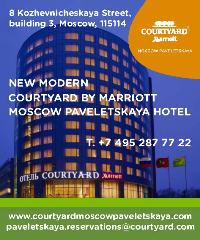
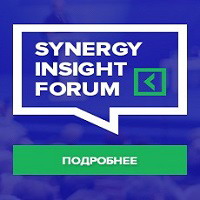
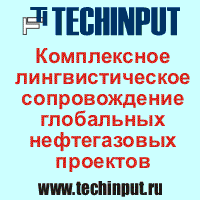

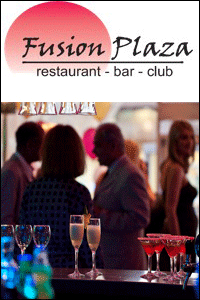
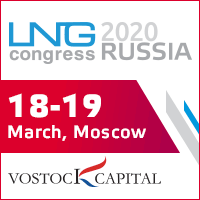
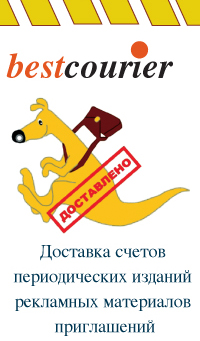
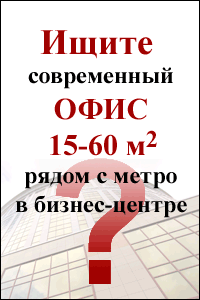
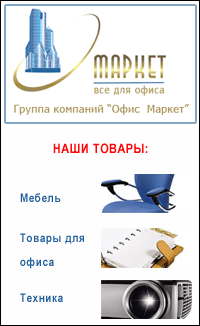
 Web design,
Web design,